أو كمَا يقُول أفلاطونٍ: “كُلّ الأشياءِ الجّميلة صعْبَة”.

أو كمَا يقُول أفلاطونٍ: “كُلّ الأشياءِ الجّميلة صعْبَة”.
More Posts from Intergalacticnerd and Others
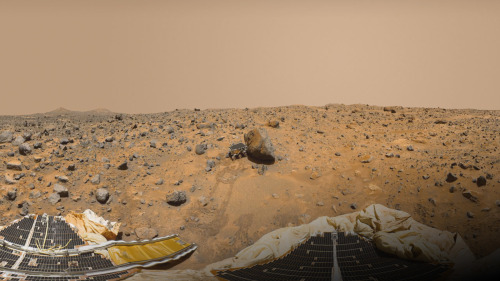
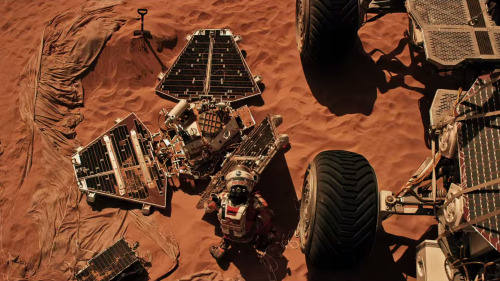
Mars Pathfinder & Sojourner Rover (360 View) Explained
Thanks to new technology, we can take a 360-degree tour of the 1997 Pathfinder mission landing site, including Sojourner, the first Mars rover. Check out this interactive YouTube panorama, and then…
…keep scrolling to find out more about each point of interest, how the Pathfinder mission compares to “The Martian” and NASA’s real Journey to Mars.

Yogi
“Yogi” is a meter-size rock about 5 meters northwest of the Mars Pathfinder lander and the second rock visited by the Sojourner Rover’s alpha proton X-ray spectrometer (APXS) instrument. This mosaic shows super resolution techniques applied to help to address questions about the texture of this rock and what it might tell us about how it came to be.

Twin Peaks
The Twin Peaks are modest-size hills to the southwest of the Mars Pathfinder landing site. They were discovered on the first panoramas taken by the IMP camera on the July 4, 1997, and subsequently identified in Viking Orbiter images taken over 20 years ago. They’re about 30-35 meters tall.

Barnacle Bill
“Barnacle Bill” is a small rock immediately west-northwest of the Mars Pathfinder lander and was the first rock visited by the Sojourner Rover’s alpha proton X-ray spectrometer (APXS) instrument. If you have some old-school red-cyan glasses, put them on and see this pic in eye-popping 3-D.

Rock Garden
The Rock Garden is a cluster of large, angular rocks tilted in a downstream direction from ancient floods on Mars. The rocky surface is comprised of materials washed down from the highlands and deposited in this ancient outflow channel.

MOAR INFO
Pathfinder Lander & Sojourner Rover
Mission Facts [PDF]
Science Results
Rock & Soil Types


This vista was stitched together from many images taken in 1997 by Pathfinder.

Pathfinder and Sojourner figure into Mark Watney’s quest for survival on the Red Planet in the book and movie, “The Martian.” See JPL’s role in making “The Martian” a reality: http://go.nasa.gov/1McRrXw and discover nine real NASA technologies depicted in “The Martian”: http://go.nasa.gov/1QiyUiC.

So what about the real-life “Journey to Mars”? NASA is developing the capabilities needed to send humans to Mars in the 2030s. Discover more at http://nasa.gov/journeytomars and don’t forget to visit me when you make it to the Red Planet. Until then, stay curious and I’ll see you online.

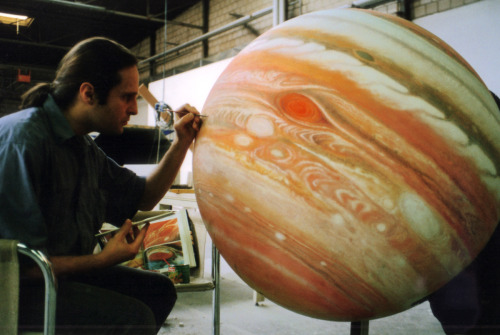
What’s Up for March 2016?
In March, Jupiter, it’s moons and moon shadows will all be visible in the sky. Find out when and where to look up:

Jupiter dominates the evening sky this month, rising at sunset and setting at dawn. On March 8, Jupiter reaches what is called “opposition”. Imagine that Jupiter and the sun are at opposite ends of a straight line, with the Earth in between. This brings Jupiter its closest to Earth, so it shines brighter and appears larger in telescopes.

On the nights of March 14 – 15, March 21 – 22 and March 29, two of Jupiter’s moons will cross the planet’s disk.

When the planet is at opposition and the sun shines on Jupiter’s moons, we can see the moon’s shadow crossing the planet. There are actually 11 of these double shadow transits in March!

The next six months will be awesome times for you to image Jupiter when it’s highest in the sky; near midnight now, and a little earlier each night through the late summer.
Even through the smallest telescopes or binoculars, you should be able to see the two prominent belts on each side of Jupiter’s equator made up of the four Galilean moons: Io, Europa Ganymede and Calisto. If you have a good enough view, you may even see Jupiter’s Red Spot!

Our Juno spacecraft will arrive at Jupiter on July 4th of this year and will go into orbit around the giant planet. Right now, the Juno mission science team is actively seeking amateur and professional images of the planet. These images are uploaded to a Juno website, and the public is invited to discuss points of interest in Jupiter’s atmosphere.

Locations will later be voted on and the favorites will be targets for JunoCam, the spacecraft’s imaging camera. Once JunoCam has taken the images, they’ll be posted online. Imaging participants can then process these raw mission images and re-upload them for others to view.

Make sure to follow us on Tumblr for your regular dose of space: http://nasa.tumblr.com
Send a space thing for questions
Planets: Life
Mercury: What’s your full name?
Venus: What’s your first language?
Earth: Where’s your home?
Mars: What’s your sexuality?
Jupiter: Do you have any siblings?
Saturn: Any pets?
Uranus: What’s your hobby?
Neptune: When’s your birthday?
Pluto: What time is it right now where you are?
Moon: What are you currently studying/hope to study?
Stars: Experiences
Sun: Have you ever had alcohol?
Sirius: Have you ever failed a class?
Rigel: Have you ever gone on a rollercoaster?
Deneb: Have you ever been out of your home country?
Arcturus: Have you cried out of something other than sadness?
Betelgeuse: What’s something you can never forget about?
Aldebaran: What’s something you care desperately about?
Canopus: Have you ever broken a bone?
Bellatrix: Have you ever been forced to lie/keep a secret?
Alphard: Have you ever lost a friend?
Vega: What’s something you’ve done that you wish you hadn’t?
Constellations: Favourites
Centaurus: Favourite holiday?
Orion: Favourite month?
Cassiopeia: Favourite book?
Delphinus: Favourite study?
Hercules: Favourite instrument?
Gemini: Favourite song?
Pegasus: Favourite place to be?
Libra: Favourite colour?
Phoenix: Favourite thing to wear?
Aries: Favourite movie?
Cygnus: Favourite weather?
Hydra: Favourite sound?
Galaxies: Love/Friends
Milky Way: Who’s your oldest friend?
Andromeda: Do you consider yourself social?
Black Eye Galaxy: Do you believe in love at first sight?
Cartwheel Galaxy: When was your first kiss?
Cigar Galaxy: How’s your flirting skills?
Comet Galaxy: Have you ever had to leave a relationship because someone changed too much?
Pinwheel Galaxy: Would you date the last person you talked to?
Sombrero Galaxy: Do you have a crush right now?
Bode’s Galaxy: Have you ever had a secret admirer?
Sunflower Galaxy: Would you date/make friends with someone out of pity?
Tadpole Galaxy: Would you deny a relationship/friendship?
Whirlpool Galaxy: Have you ever cried over a breakup?
Other stuff: Wishes
Comet: What’s your big dream?
Asteroid: What does your dream life look like?
Meteor: What’s something you wish you could tell, but can’t?
Nebula: If you could undo one thing in your life, what would it be?
Shooting Star: If you could bring back one thing, what would it be?
Pulsar: What do you hope to do in the next 10 years?
Supernova: What’s one thing you want to do before you die?
Quasar: If you could spend the rest of your life with only one person, who would it be?
Wormhole: What’s something you wish would happen, but know won’t?
Black Hole: What’s the last thing you want to see?








We used to look up at the sky and wonder at our place in the stars. Now we just look down, and worry about our place in the dirt.
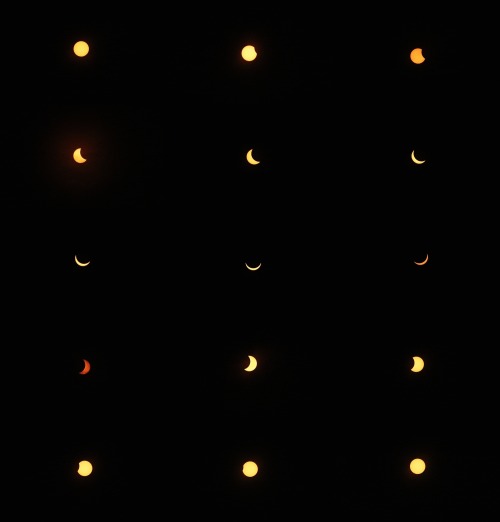


NASA Astronomy Picture of the Day 2016 January 27
An Airglow Fan from Lake to Sky
Why would the sky look like a giant fan? Airglow. The featured intermittent green glow appeared to rise from a lake through the arch of our Milky Way Galaxy, as captured last summer next to Bryce Canyon in Utah, USA. The unusual pattern was created by atmospheric gravity waves, ripples of alternating air pressure that can grow with height as the air thins, in this case about 90 kilometers up. Unlike auroras powered by collisions with energetic charged particles and seen at high latitudes, airglow is due to chemiluminescence, the production of light in a chemical reaction. More typically seen near the horizon, airglow keeps the night sky from ever being completely dark.
Dust, stars, and cosmic rays swirling around Comet 67P/Churyumov–Gerasimenko, captured by the Rosetta probe. (Source)

Black Holes are not so Black (Part 3) - Gravitational Waves
The existence of Gravitational Waves have been confirmed. But you probably have heard that. In this post, we will break down this profound discovery into comprehend-able chunks.
This is going to be a amazing journey. Ready ?
Redefining Gravity
When we usually talk of Gravitation we are bound to think like Newton, where objects are assumed to exerting a force upon each other.
Like imaginary arrows of force in space. But this picture, although good for high school crumbled, with the advent of Einstein’s theory of Relativity.

What is the Space-Time Fabric?
Think of space-time fabric as an actual cloth of fabric. ( An analogy )
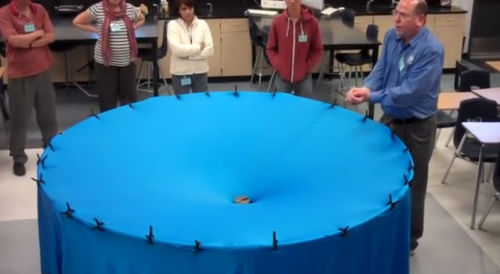
When you place an object on the fabric, the cloth curves. This is exactly what happens in the solar system as well.

The sun with such a huge mass bends the space-time fabric. And the earth and all the planets are kept in orbit by following this curvature that has been made by the sun.
Attributing to the various masses of objects, the way they bend this fabric also varies.
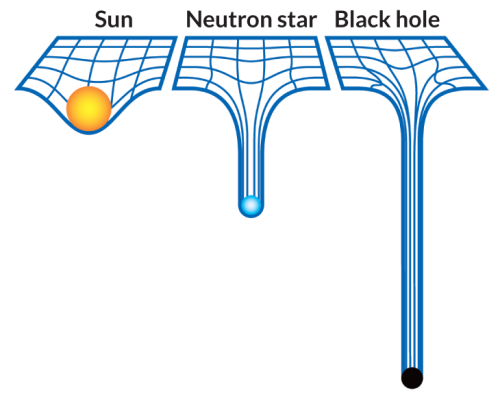
What are Gravitational Waves?
If you drop an object in a medium such as water, they produce ripples that propagate as waves through the medium.

Similarly, Gravitational waves are ripples in space-time fabric produced when you drag heavy objects through space time.
And the nature of these waves is that they don’t require a medium to propagate.
How do you make one?
Everything with mass/energy can create these waves.

Source
Two persons dancing around each other in space too can create gravitational waves. But the waves would be extremely faint.
You need something big and massive accelerating through space-time in order to even detect them.

And orbiting binary stars/black holes are valuable in this retrospect.
How can you detect them?
Let’s turn to the problem to detecting them assuming you do find binary stars/black-holes in the wondrous space to suite your needs.
Well, for starters you cannot use rocks/ rulers to measure them because as the space expands and contracts, so do the rocks. ( the distances will remain same in both the cases )

Here’s where the high school fact that the speed of Light is a constant no matter what plays an important and pivotal role.
If the space expands, the time taken for light to reach from A to B would be longer. And if it contracts, the time taken for it to reach from A to B would be smaller.

PC: PHDComics
By allowing the light waves from the contraction and expansion to interfere with each other, such as done in any interferometry experiment we can detect the expansion or contraction. Voila!
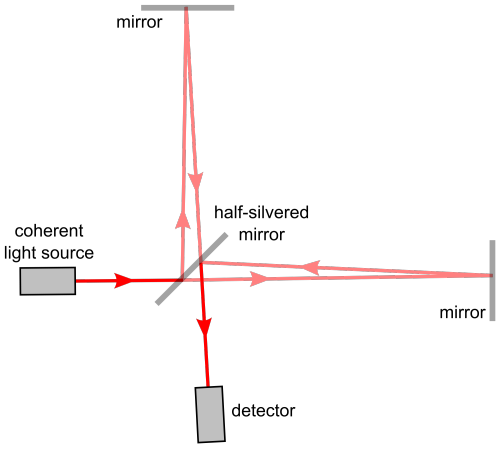
And this is exactly what they did! ( on a macroscopic level ) at LIGO (Laser Interferometer Gravitational-Wave Observatory)
14 September 2015

Two Black Holes with masses of 29 and 36 solar masses merged together some 1.3 Billion light years away.
Two Black Holes colliding is the header animation of the ‘Black Holes are not so Black Series’, in case if you haven’t noticed.

The merger of these two black holes results in the emission of energy equivalent to 3 solar masses as Gravitational Waves.
This signal was seen by both LIGO detectors, in Livingston and Hanford, with a time difference of 7 milliseconds.
And with the measurement of this time difference, physicists have pronounced the existence of Gravitational Waves.
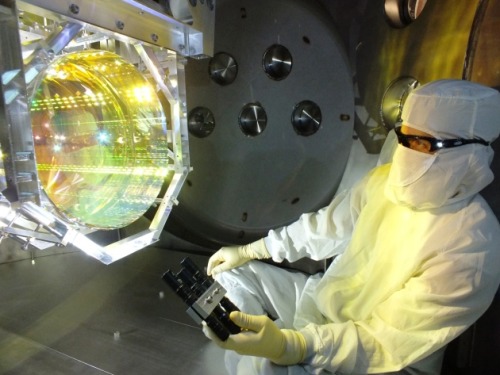
Source
All this is most certainly easily said than done and requires meticulous and extensive research, not to mention highly sensitive instruments.
Had they not have measured this time difference, we might have had to wait for the merger for more massive black holes to collide and maybe even build more sensitive instruments to detect these waves.
And Einstein predicted this a 100 years back!
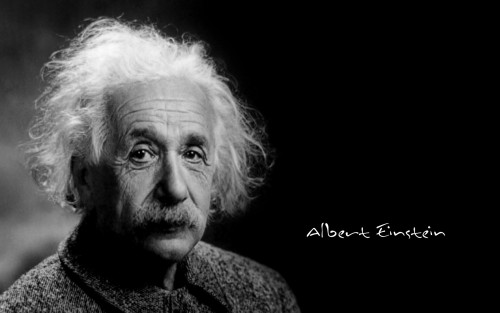
Mind Blown!
Note: Hope you are able to understand and appreciate the profundity of the discovery done by mankind.
** All animations used here are merely for Educational purposes. If you have any issues, please write to us at : 153armstrong@gmail.com
-
 n-365 liked this · 2 years ago
n-365 liked this · 2 years ago -
 ikhaleil liked this · 6 years ago
ikhaleil liked this · 6 years ago -
 looly12blogsworld liked this · 6 years ago
looly12blogsworld liked this · 6 years ago -
 mukatio liked this · 6 years ago
mukatio liked this · 6 years ago -
 khanthenorgard liked this · 6 years ago
khanthenorgard liked this · 6 years ago -
 aki-far liked this · 6 years ago
aki-far liked this · 6 years ago -
 viola998a-blog liked this · 6 years ago
viola998a-blog liked this · 6 years ago -
 noone813 liked this · 6 years ago
noone813 liked this · 6 years ago -
 rajaabs-blog reblogged this · 6 years ago
rajaabs-blog reblogged this · 6 years ago -
 unknowdallas liked this · 6 years ago
unknowdallas liked this · 6 years ago -
 hammoudi15tripadvisor liked this · 7 years ago
hammoudi15tripadvisor liked this · 7 years ago -
 es-raas-world-blog liked this · 7 years ago
es-raas-world-blog liked this · 7 years ago -
 sarash5 liked this · 7 years ago
sarash5 liked this · 7 years ago -
 tobaley reblogged this · 7 years ago
tobaley reblogged this · 7 years ago -
 asoooom999 liked this · 7 years ago
asoooom999 liked this · 7 years ago -
 alyaa-fuckthepatriarchy liked this · 7 years ago
alyaa-fuckthepatriarchy liked this · 7 years ago -
 alahussain liked this · 7 years ago
alahussain liked this · 7 years ago -
 taifbq-blog liked this · 7 years ago
taifbq-blog liked this · 7 years ago -
 auz70 liked this · 7 years ago
auz70 liked this · 7 years ago -
 mrymhany-blog liked this · 7 years ago
mrymhany-blog liked this · 7 years ago -
 messyinbox liked this · 7 years ago
messyinbox liked this · 7 years ago -
 zainabemad660 liked this · 7 years ago
zainabemad660 liked this · 7 years ago -
 oblivion-k liked this · 7 years ago
oblivion-k liked this · 7 years ago -
 khattab95omar liked this · 7 years ago
khattab95omar liked this · 7 years ago -
 njjaattt liked this · 7 years ago
njjaattt liked this · 7 years ago -
 al-tarek liked this · 7 years ago
al-tarek liked this · 7 years ago -
 rowankassem liked this · 7 years ago
rowankassem liked this · 7 years ago -
 finite-infinities reblogged this · 7 years ago
finite-infinities reblogged this · 7 years ago -
 ashestoerin reblogged this · 7 years ago
ashestoerin reblogged this · 7 years ago -
 marvel-verse liked this · 7 years ago
marvel-verse liked this · 7 years ago -
 lonelymountainking liked this · 7 years ago
lonelymountainking liked this · 7 years ago -
 presidentnaruto reblogged this · 7 years ago
presidentnaruto reblogged this · 7 years ago -
 presidentnaruto liked this · 7 years ago
presidentnaruto liked this · 7 years ago -
 jgvillanueva reblogged this · 7 years ago
jgvillanueva reblogged this · 7 years ago -
 danvyleung reblogged this · 7 years ago
danvyleung reblogged this · 7 years ago -
 you-and-i-the-stars-in-the-sky reblogged this · 7 years ago
you-and-i-the-stars-in-the-sky reblogged this · 7 years ago -
 cryinglove reblogged this · 7 years ago
cryinglove reblogged this · 7 years ago -
 thelostt liked this · 8 years ago
thelostt liked this · 8 years ago -
 thesolitarycat liked this · 8 years ago
thesolitarycat liked this · 8 years ago -
 avanija liked this · 8 years ago
avanija liked this · 8 years ago -
 melancholy-introvert reblogged this · 8 years ago
melancholy-introvert reblogged this · 8 years ago
"Astronomy compels the soul to look upwards and leads us from this world to another." - Plato
147 posts